Moroccan kitchen backsplashes are a stunning design element that can transform any kitchen space into a vibrant and culturally rich environment. The patterns, colors, and intricate details associated with Moroccan tiles are not only beautiful but also deeply rooted in history, giving your kitchen a sense of timelessness and artistic flair. When I first considered incorporating a Moroccan backsplash into my kitchen, I found myself drawn to the blend of traditional and modern elements these tiles offer. Their design draws inspiration from Moorish architecture and Islamic art, combining geometric shapes, floral motifs, and arabesques in ways that feel both lively and harmonious.
The process of choosing Moroccan tiles is a journey in itself. The variety of patterns is almost endless, ranging from simple geometric designs to more elaborate mosaics. I spent hours flipping through catalogs and visiting showrooms, marveling at the different color schemes and layouts. The color palette typically includes deep blues, rich reds, burnt oranges, and soothing greens, all often accented with whites and golds. I was particularly captivated by the intricate zellige tiles, handmade from clay and glazed in a way that gives them a distinctive glossy finish. This handcrafting process ensures that no two tiles are identical, adding a unique and personalized touch to any backsplash.

One of the benefits of a Moroccan kitchen backsplash is the versatility it offers. It can serve as the focal point of your kitchen, or it can complement other design elements, such as countertops, cabinetry, and flooring. For example, I decided to contrast my Moroccan tiles with sleek white countertops and dark wood cabinetry to create a balanced look that highlights the intricate details of the tiles while maintaining a modern aesthetic. It’s important to consider the overall color scheme of your kitchen when selecting Moroccan tiles. While the tiles themselves are often bold, the rest of the kitchen should work harmoniously with them.
Installing Moroccan tiles requires attention to detail and careful planning. Unlike other types of tiles, Moroccan tiles often have irregular shapes and sizes due to their handmade nature. This can make installation a bit more challenging, but the result is worth the effort. I found it helpful to work closely with my contractor to ensure the layout was perfect before any adhesive was applied. This involved spending a significant amount of time arranging and rearranging the tiles until I found the right balance of colors and patterns. It’s essential to plan your layout in advance, as once the tiles are set, they can be difficult to adjust.

The grout color you choose can significantly impact the overall look of the backsplash. When I was selecting grout for my Moroccan tiles, I had to decide whether I wanted the grout to blend in or stand out. A darker grout can make the tiles pop and emphasize their individual shapes, while a lighter grout creates a more seamless, cohesive appearance. I opted for a mid-tone grout that offered a balance between the two, allowing the tile patterns to shine without overwhelming the space. Whichever grout you choose, make sure it’s sealed properly to protect it from stains and moisture over time.
Another critical aspect of the installation process is ensuring that the tiles are properly sealed, both before and after installation. Moroccan tiles, particularly zellige, are porous and can absorb stains if not sealed correctly. I had my tiles sealed prior to installation, which provided an added layer of protection during the grouting process. After installation, a final sealant was applied to safeguard the tiles from moisture and spills, which is particularly important in a kitchen setting. This step is often overlooked but is crucial for maintaining the beauty and longevity of the backsplash.
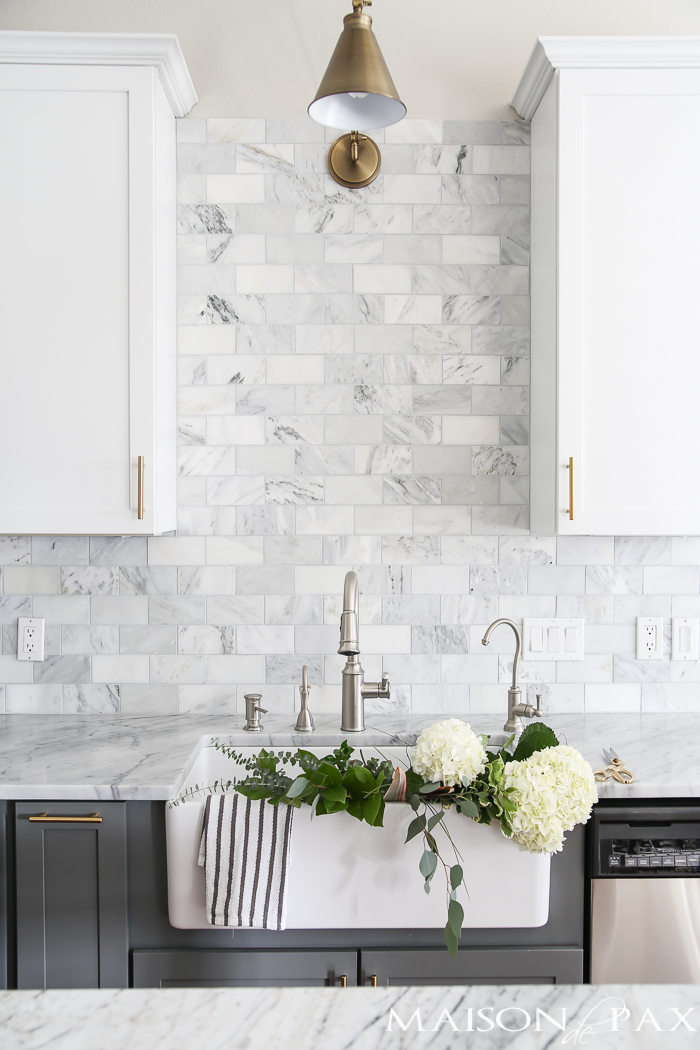
In terms of maintenance, Moroccan kitchen backsplashes are relatively easy to care for as long as they are sealed correctly. A simple wipe-down with a damp cloth is usually sufficient to keep the tiles looking fresh. For tougher stains, a mild cleaning solution can be used, but I always make sure to avoid harsh chemicals that could damage the glaze or the sealant. One of the things I love most about my Moroccan backsplash is how low-maintenance it is. The tiles are durable, resistant to heat, and can handle the daily wear and tear of a busy kitchen, making them both a practical and aesthetic choice.
Another factor to consider when installing a Moroccan kitchen backsplash is the lighting in your kitchen. Good lighting can enhance the natural sheen of zellige tiles, making the space feel brighter and more open. I installed under-cabinet lighting to highlight the glossy finish of the tiles and to create a warm, inviting atmosphere in the kitchen. The way light interacts with the tiles can change the look of the space throughout the day, adding depth and character. If you’re considering Moroccan tiles for your kitchen, take the time to evaluate how your existing lighting will interact with them or if additional lighting is needed.
One of the most exciting aspects of a Moroccan backsplash is its ability to tell a story. Each tile, with its handcrafted imperfections and unique glaze, adds a sense of history and craftsmanship to the kitchen. It’s not just a decorative element; it’s a celebration of culture and art. I often find myself staring at the patterns, noticing new details I hadn’t seen before. The backsplash becomes more than just a functional part of the kitchen—it becomes a conversation starter and a focal point that draws people in.
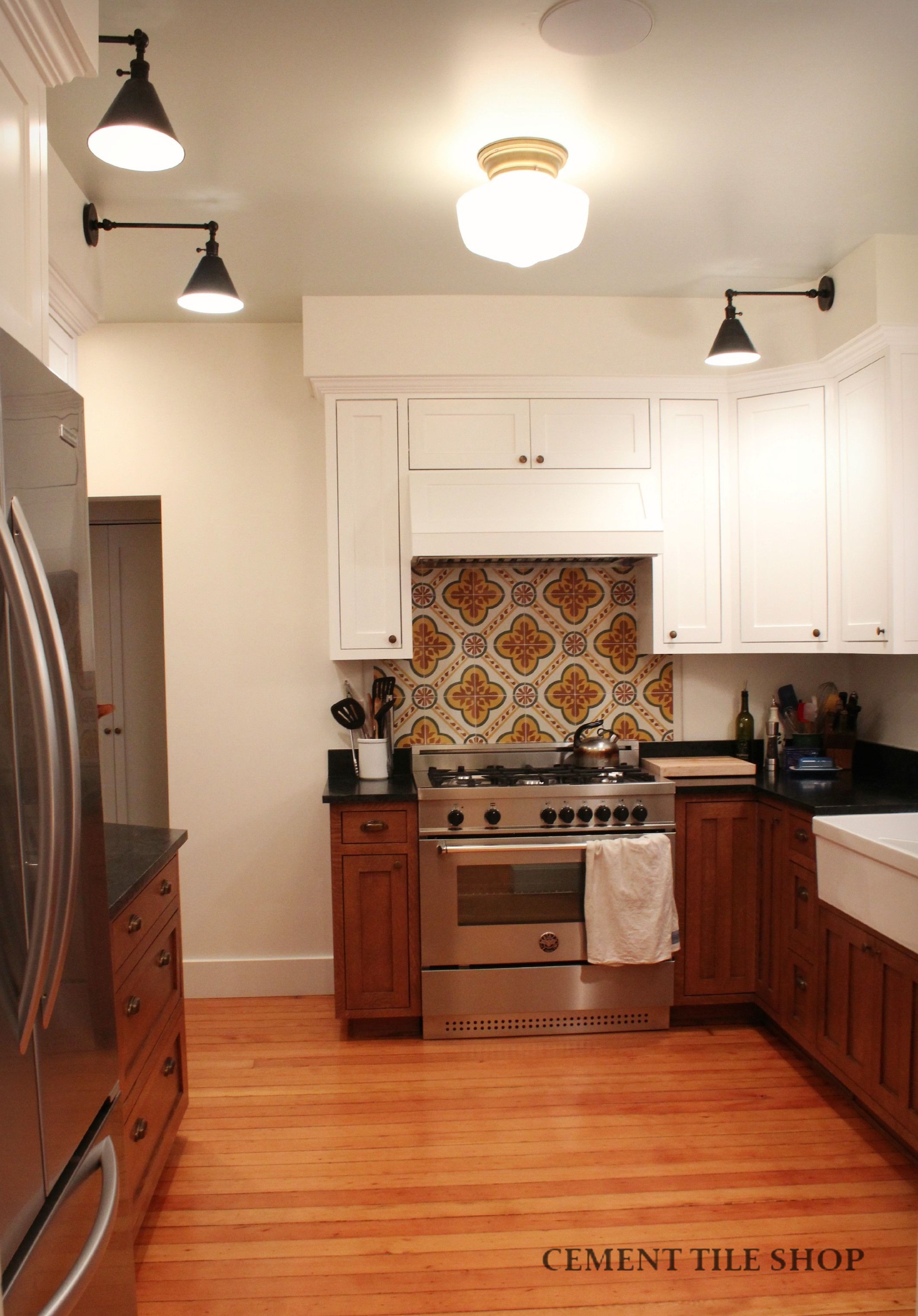
Adding a Moroccan backsplash to your kitchen also offers an opportunity to mix and match styles. Moroccan tiles can complement a wide range of kitchen designs, from rustic and traditional to modern and minimalist. I experimented with pairing my tiles with various design elements, such as brass fixtures and vintage-inspired lighting, which gave the kitchen a warm, eclectic feel. Whether you’re going for a bold, colorful look or something more understated, Moroccan tiles can adapt to your vision and enhance the overall aesthetic of your kitchen.
Moroccan tiles can also be used in other parts of the kitchen beyond the backsplash. When I was designing my kitchen, I considered extending the tiles to other areas, such as the floor or even as an accent wall behind open shelving. This continuity of design helps to create a cohesive space that feels intentional and well thought out. Using Moroccan tiles in multiple areas of the kitchen can also help tie together different design elements and create a sense of flow and harmony throughout the space.
Sustainability is another factor that drew me to Moroccan tiles. Many Moroccan tiles are handmade from natural materials, such as clay, and are produced using traditional methods that have been passed down through generations. This artisanal approach not only results in beautiful, one-of-a-kind tiles but also supports local craftspeople and preserves cultural heritage. When I selected my tiles, I felt good knowing that I was choosing an eco-friendly option that had a minimal environmental impact compared to mass-produced alternatives.
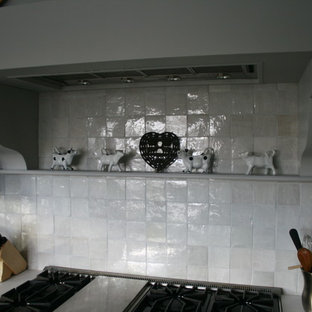
The versatility of Moroccan tiles also allows for creative customization. While traditional Moroccan tiles often come in pre-set patterns, many companies offer the option to create custom designs. This allows you to play with color schemes and patterns that are tailored to your specific tastes and the layout of your kitchen. I explored this option and ended up with a design that incorporated elements of both traditional Moroccan patterns and more contemporary shapes, giving my kitchen a unique and personalized touch.
Moroccan backsplashes also offer a sense of longevity and durability. These tiles are built to last and, with proper care, will maintain their beauty for years to come. I considered my backsplash an investment in my home, not only because of its aesthetic appeal but also because of its durability and timelessness. Trends in kitchen design may come and go, but Moroccan tiles have a classic quality that transcends fleeting fads, ensuring that your kitchen will remain stylish for years to come.
Finally, incorporating a Moroccan kitchen backsplash is a way to make your kitchen feel more global and connected to a larger world of design. It introduces elements of faraway cultures and traditions into the heart of your home, making the space feel richer and more meaningful. I love knowing that my backsplash is not just a piece of decoration but also a nod to the rich history and artistry of Moroccan craftsmanship. It makes my kitchen feel more personal, more inspired, and more alive.

Common Mistakes to Avoid
One of the most common mistakes when installing a Moroccan kitchen backsplash is failing to properly plan the layout. Given the intricate patterns and handmade nature of the tiles, it’s crucial to arrange them in advance and ensure everything aligns correctly before securing them in place. Skipping this step can lead to uneven patterns and awkward gaps that detract from the overall design.
Another mistake is not sealing the tiles adequately. Moroccan tiles, particularly zellige, are porous and require proper sealing to prevent stains and moisture damage. Failing to apply a sealant can result in discolored tiles, especially in high-moisture areas like kitchens.
Choosing the wrong grout color is another frequent error. Some homeowners opt for grout that clashes with the tiles, which can disrupt the overall aesthetic. Careful consideration of grout color is essential for achieving a harmonious design.
Additionally, improper cleaning methods can damage Moroccan tiles. Using harsh chemicals can erode the glaze and sealant, so it’s vital to stick to gentle, non-abrasive cleaners.
Last, neglecting to account for lighting is a common oversight. Poor lighting can dull the beauty of the tiles, so it’s important to ensure your kitchen has sufficient illumination to showcase your backsplash.
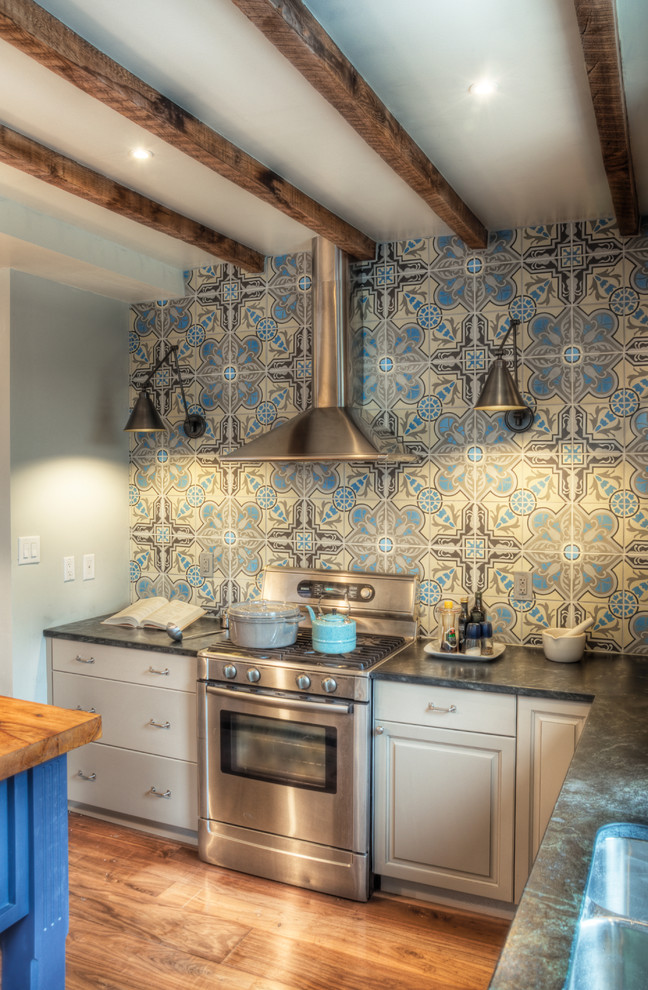
What materials are Moroccan tiles typically made of?
Moroccan tiles are often made from natural materials like clay, particularly zellige tiles, which are hand-cut and glazed in traditional ways. The clay gives the tiles a unique, rustic feel, while the glaze provides a beautiful sheen and color variation that makes each tile distinct. These handmade tiles are a staple of Moroccan design and are known for their durability and timeless beauty.
Can Moroccan tiles be used in modern kitchen designs?
Absolutely. Moroccan tiles are incredibly versatile and can fit into a wide range of kitchen styles, including modern designs. Their bold patterns can create an eye-catching contrast with sleek, minimalist elements like simple cabinetry and countertops. The combination of traditional Moroccan patterns with contemporary materials can create a unique and balanced aesthetic in any kitchen.
Are Moroccan tiles easy to maintain?
Yes, Moroccan tiles are relatively low maintenance as long as they are sealed properly. The glaze on the tiles provides some protection against stains, but regular cleaning with a damp cloth and mild cleaner will keep them looking fresh. It’s important to avoid harsh chemicals that could damage the tile’s finish. With proper care, Moroccan tiles can retain their beauty for years.

How long do Moroccan tiles typically last?
Moroccan tiles are built to last and can endure for decades with proper care. The tiles are highly durable and resistant to heat, making them perfect for kitchens. Regular maintenance, such as sealing and gentle cleaning, will help ensure their longevity. Their timeless design also means that they won’t go out of style, making them a lasting investment in your home.
What is the average cost of installing a Moroccan kitchen backsplash?
The cost can vary depending on the type of tile, the complexity of the pattern, and the size of your kitchen. Handmade zellige tiles tend to be more expensive than machine-made tiles due to the craftsmanship involved. On average, you might expect to pay between $20 to $50 per square foot for the tiles themselves, with additional costs for installation. While Moroccan tiles are a more premium option, their longevity and aesthetic appeal often justify the investment.
Can I install a Moroccan backsplash myself, or should I hire a professional?
While it’s possible to install a Moroccan backsplash yourself, it can be quite challenging due to the handmade nature of the tiles. The irregular shapes and sizes require careful planning and precision. If you’re experienced with DIY projects, you may be able to tackle the installation on your own. However, hiring a professional ensures that the tiles are installed correctly and will save you time and frustration.
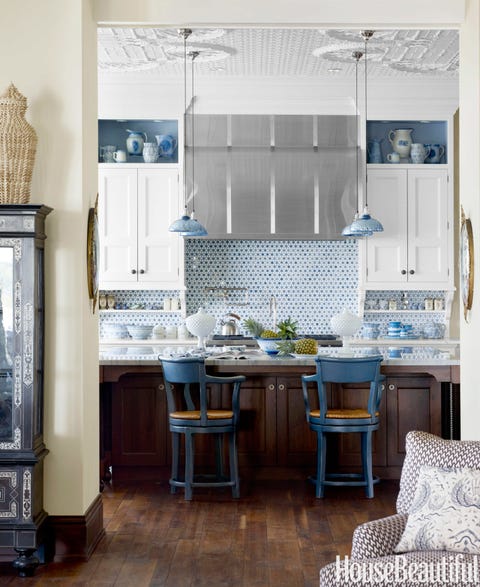
Related Posts:
- Can You Paint Kitchen Tile Backsplash
- Kitchens With Arabesque Tile Backsplash
- White Kitchen Cabinets With Grey Backsplash
- Wood Panel Kitchen Backsplash
- Kitchen Backsplash Photos Ideas
- Kitchen Backsplash Ideas With Honey Oak Cabinets
- Kitchen Backsplash Border
- Aluminum Kitchen Backsplash
- Can You Paint Backsplash Tile Kitchen
- Do I Need A Backsplash In My Kitchen